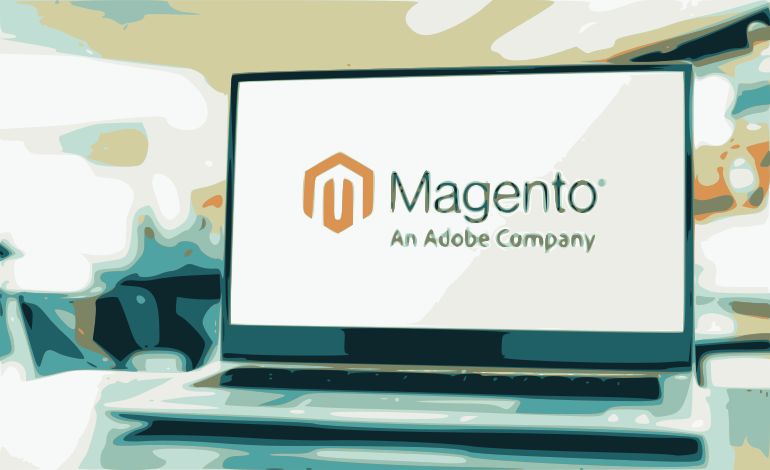Real Time: We don’t say Enough about HCL Commerce and Adobe Commerce
Adobe Commerce is previously Magento Commerce and HCL Commerce is previously Websphere Commerce.
- By Mensah Alkebu-Lan
- 26 September 2022

Table of Contents
- What is an eCommerce Platform?
- You know Adobe, but what About Adobe Commerce?
- About HCL Technologies
- HCL Commerce
- The Product Portfolio
- References
What is an eCommerce Platform?
Quite frankly, online shopping is booming. Store owners generally welcome the online sales that add to their current in store sales. And, fortunately, when it comes to eCommerce platforms, large and small businesses have a number to choose from.
Generally, we only talk about five or so ecommerce solutions as if there aren’t many more out there. In this article, we’ll try to dig a little deeper for those who are thinking about expanding their online business or start selling online.
Oftentimes, the path you decide to take may depend on your existing stack. For example, if you’re already comfortable with WordPress sites, you may decide to use a WordPress plugin called WooCommerce to add shopping cart functionality to your existing site. In the WooCommerce ecosystem, there are countless other plugins for thing like email marketing.
If you take that route, you could use a web hosting service like Bluehost. Technically, Wordpress with WooCommerce is open-source, and there are other open source ecommerce solutions like PrestaShop.
The path you decide to take may depend on what you’re selling. For example, If you’re a creative you may consider a platform like Big Cartel.
Whether you’re an existing brick-and-mortar store looking to go online to increase your customer base or just a seller who wants to get his or her products to market quickly, there are a number of things to consider when evaluating eCommerce solutions. One of the obvious is fees. You have to consider base monthly, payment gateway, and transaction fees. You’ll also want to look for payment processor integrations like PayPal or Stripe in order to accept payments. The platform will probably come with a site builder, so you’ll want to see for yourself how user-friendly it is. There are ecommerce features non-technical business owners may not think about like SEO and Marketing tools to improve their search result raking and get seen online.
There’s nothing wrong with freebies. Possible free features include things like free SSL certificates. And speaking of free, some platforms like Ecwid may even offer a free plan that gives you a chance to try some things out before you scale to a paid plan. And if they don’t have a free plan, they may offer free themes, so you can get started quickly and then decide on a signature theme later.
There are other features, an ecommerce platform will have in general. For example, they will generally integrate with inventory management software or may even have those features built-in. Some platforms take inventory management to the next level with real-time data.
Adobe Commerce and HCL Commerce are often overlooked, so we figured we’d take a closer look at them.
You Know Adobe, but what about Adobe Commerce?
Adobe Commerce (previously Magento Commerce) allows store owners to quickly build shopping experiences without developer support. One obvious plus for this platform is native integrations with Adobe products like Analytics, Target, Experience Manager, and Creative Cloud.
About HCL Technologies
HCL Technologies operates through the IT, Business Process Outsourcing, and Software services segments. Shiv Nadar founded the company on November 12, 1991. The current CEO is C Vijayakumar with Roshni Nadar Malhotra serving as Chairperson.
On Social Media
- “HCL Technologies - Home.” Facebook, https://www.facebook.com/HCLTechnologies/.
- “Official LinkedIn stream of HCL Technologies.” LinkedIn, 10 August 2008, https://www.linkedin.com/company/hcl-technologies.
- “HCL Technologies.” YouTube, https://www.youtube.com/user/HCLTechtube.
- “HCL Technologies (@hcltech) • Instagram photos and videos.” Instagram, https://www.instagram.com/hcltech/?hl=en.
HCL Commerce
HCL Commerce (formerly known as IBM Websphere Commerce) is an on-premise ecommerce platform for organizations of all sizes. It is a single unified platform that offers the ability to do business directly with consumers (B2C), directly with businesses (B2B), and indirectly through channel partners (indirect business models). Regardless of the sales channel, the platform delivers a powerful customer experience.
This is not just a platform for selling products online. It provides a powerful customer interaction for omni-channel commerce. Its cloud-native architecture scales to meet any demand. Also, the v9.0 release features containerization to provide businesses with more flexibility and resiliency.
I should also mention at the end of 2018, IBM and HCL Technologies announced a definitive agreement under which HCL acquired the IBM Websphere Commerce line of software products. However, you are still able to reference Websphere Commerce documentation on IBM’s website.
The Product Portfolio
The product portfolio consists of three editions: express, professional, and enterprise. The professional edition provides a powerful customer interaction platform to help mid-size companies offer personalized cross-channel shopping. The enterprise edition offers features like being able to engage shoppers with social commerce capabilities.
All editions have the Websphere Commerce search and other attractive features to expand a business’s online presence. This is an enhanced search engine with automatic search term suggestions and spelling correction capabilities. You will also be sure to appreciate the fact customer service is built into the storefront.
References
1. “IBM Websphere Commerce - Documentation”, https://www.ibm.com/docs/es/cloud-private/3.1.1?topic=services-websphere-commerce. Accessed 20 September 2022.
2. “WebSphere Commerce common architecture.” HCL Product Documentation, https://help.hcltechsw.com/commerce/8.0.0/developer/concepts/csdsoftwarecomp.html. Accessed 20 September 2022.
3. “WebSphere Commerce product overview.” HCL Product Documentation, 6 December 2018, https://help.hcltechsw.com/commerce/7.0.0/com.ibm.commerce.admin.doc/concepts/covoverall.html. Accessed 20 September 2022.
4. “B2B and B2C eCommerce Software and Platform for Enterprise Solutions.” HCL Software, https://www.hcltechsw.com/commerce. Accessed 25 September 2022.
5. “HCL Commerce product overview.” HCL Product Documentation, https://help.hcltechsw.com/commerce/9.1.0/admin/concepts/covoverall.html. Accessed 25 September 2022.
6. \"HCL Technologies | Company Overview & News.” Forbes, https://www.forbes.com/companies/hcl-technologies/. Accessed 25 September 2022.
7. Guinness, Harry. “The 6 best eCommerce platforms in 2022.” Zapier, 30 November 2021, https://zapier.com/blog/best-ecommerce-shopping-cart-software/. Accessed 25 September 2022.
8. “The Best E-Commerce Platforms Of 2022 – Forbes Advisor.” Forbes, 18 September 2022, https://www.forbes.com/advisor/business/software/best-ecommerce-platform/. Accessed 25 September 2022.
9. “Best eCommerce Platforms of 2022: Compare Reviews on 250+.” G2, https://www.g2.com/categories/e-commerce-platforms. Accessed 25 September 2022.
10. Lofgren, Lars. “Top 6 Best Ecommerce Platforms – 2022 Review.” QuickSprout, 15 September 2022, https://www.quicksprout.com/best-ecommerce-platforms/. Accessed 25 September 2022.
11. “Magento, now Adobe Commerce | eCommerce Software.” Adobe Experience Cloud, https://business.adobe.com/products/magento/magento-commerce.html. Accessed 25 September 2022.
12. “11 Best Ecommerce Platforms Compared & Rated For 2022.” Ecommerce CEO, https://www.ecommerceceo.com/ecommerce-platforms/. Accessed 25 September 2022.
data visualization
What is Data Analytics - Advanced Data Analysis Techniquessmall business
Benefits of African American Chambers of Commerce
